Sketching people is fun. But Roz Stendahl is interested in the other animals one sees in cities. She recently had a field day at the Minnesota State Fair, and invited some other Urban Sketchers along.
Lead Image: “Who Doesn’t Like the Smell in Here.” A sketch of a sheep at the Minnesota State Fair, by Roz Stendahl
“Everybody knows I’m crazy about animals, and they know I’m going to be at the fair,” says the Minneapolis artist. But it doesn’t take a fair to get Stendahl out painting the non-human inhabitants of this planet. Don’t badmouth pigeons around her. “My attitude is that pigeons are an introduced species, even though they are invasive,” she says. “They were introduced because they were good for meat, and good for carrying messages. And now we know that they are good at breeding and good at surviving anywhere.”
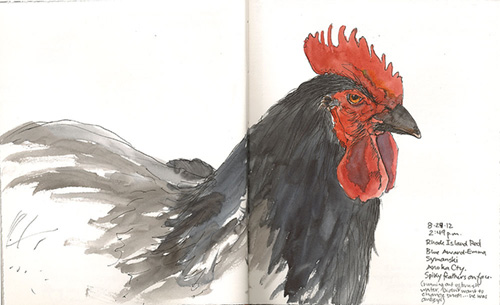
Squirrels are another favorite subject of hers. “I’ve been sketching squirrels for years,” Stendahl says. “I can get the gesture from far away, and I can add details from memory because I know them from previous sketches.”
That’s at the root of Stendahl’s advice on sketching animals — do many sketches, and build up your knowledge of anatomy, typical gestures, and behavior. “Whether you are in an urban area or out in the wilderness, first observe,” she says. “Use good safety-judgment analysis first, then observe. Note that they take certain poses. Even a wild animal with a lot of space to move around in will do repeated gestures. Look at those, and study them. Make marks on the paper. Have many drawings on your page, even if you only work on one for three seconds. Your goal is to always be drawing, but not working on the same sketch all that time. After a while you will have quite a lot of partially made sketches and a few fully made sketches. You will know the structure of the animal and the angles when they are in a certain pose. The first time out may not look all that great. Your bears might look like dogs. That’s OK. It’s a good sign, actually — it’s better than them looking like birds!”
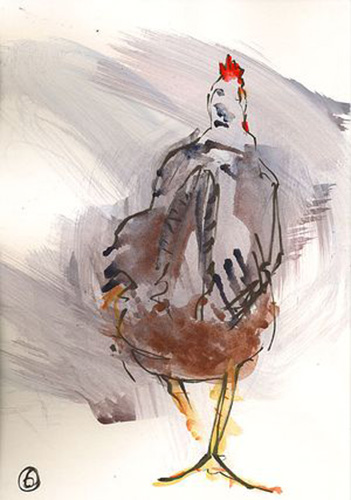
Stendahl goes to the zoo. She goes to the park. She sketches “yard chickens” in small lots in Minneapolis. She even sketches roadkill. “The more you do these types of things, the more you develop an internal memory and the more you realize what they look like in 3D,” she says. Taxidermy is a longtime favorite of hers. She says she has sketched the taxidermied animals in the Bell Museum of Natural History, on the University of Minnesota’s campus, since she was 3 1/2 years old. “I have sketched everything in there at least once,” says Stendahl. “Even the ratty little specimens that don’t look like much.”
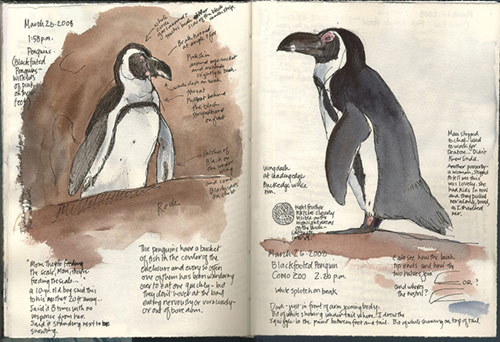
Stendahl favors an ink pen, and she doesn’t believe in erasures. “The extra marks, the wrong ones you put down, you can use to tell you where not to go,” she says. Stendahl suggests that sketching animals is sort of “a taboo subject among urban sketchers,” but really, what are humans but another kind of animal? “People do the same things in a coffee shop, over and over,” she points out. “Staring at the cellphone, reading, drinking coffee, talking, staring off into space — they keep falling into the same poses. Every time someone goes back to one of the positions, go back to that drawing. You can’t do it all in one go. That’s not how life is.”
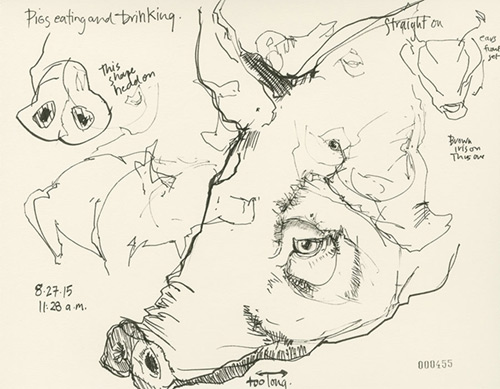
She goes on, “Study behavior, and wait for it to repeat. Watch, and try to capture it in your mind. Put it down, then move on to the next pose. It’s kind of like a dance. It’s timing. Even animals in the wild do this. They just range much further, and go out of our view.”



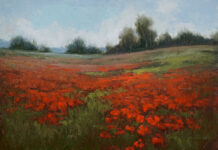
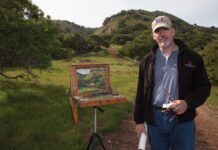
The best advice contained in one wonderful article. Thank you!
[…] was interviewed for Outdoor Painter about Urban Sketching and […]